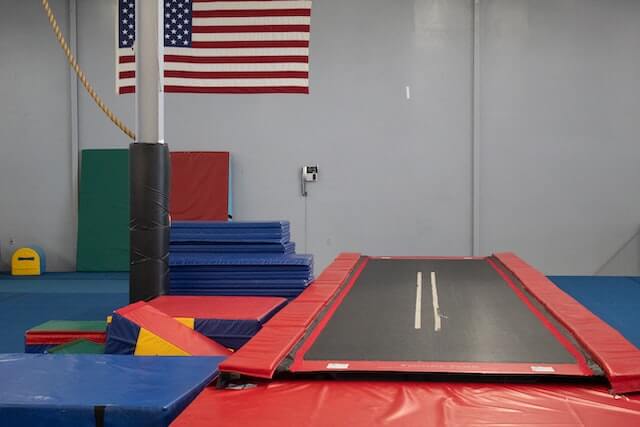People often ask, “What trampoline size should I buy?”
Most of the time, this is due to a lack of knowledge about what trampoline size is best for your kid and your house. There you have it: Our trampoline sizing chart.
The trampoline you buy should fit in your yard or jumping area, free of any items or barriers that might injure a child who jumps on it. Consider looking elsewhere for trampolines that suit your yard or jumping area if you can’t locate one. The trampoline should be safe for the children who will be using it. As a result, we’ve put up a trampoline size guide to help you feel more at ease and make an informed decision about which trampoline to buy.
Most Popular Trampoline Sizes
To begin, you may wonder what the most common trampoline size is or what sizes do trampolines come in, and why that particular size is so popular.
The most popular kind is an 8-foot trampoline with a safety cage. For the last several years, it has been a popular size, and the reason for its rise in popularity is that it’s suitable for youngsters as young as four and can typically carry up to 75 kgs, or 11 stone and 8 pounds. In other words, this should be simple enough for kids of all ages to use.
It’s the most popular size since children tend to become more active at this Age, and most parents want their kids to grow up in a safe environment. There are several health benefits to trampolines, including improved coordination and balance, as well as cognitive and language development, for children who use them.
Trampoline Sizing Factors to Consider
If you want to know what size trampoline is best for your children, you need to start by considering several facts. Among them are:
- The trampoline’s purpose is unclear.
- How many yards do you have to put the trampoline in?
- How much money do you have to work with?
- Shape-wise, Trampoline Sizes in Common Use
Trampolines come in various forms: round, oval, rectangular, square, octagonal, in-ground trampolines, water trampolines, spring-free trampolines, and more. Gymnasts often utilize rectangular trampolines, whereas a round or circular trampolines are more commonly seen at amusement parks.
The most common preference among young boys is for a round trampoline, but as they age, they switch to rectangular trampolines. Because girls like dancing and gymnastics, they choose rectangular trampolines over circular ones.
However, the size is just as crucial as the form. Standard trampoline heights range from 8 to 15 feet. However, we’ve included a broader range of sizes in the following sections, organized by form.
The Size of Round Trampolines:
The center pulling bouncing provided by round-shaped trampolines is safer than all other bouncers. Trampolines in the 8ft, 10ft, 12ft, 14ft, and 15ft sizes are among the most popular. All of them have specific purposes.
8ft and 10ft circular trampolines are excellent options if you don’t have a lot of space for a trampoline. In addition, they’re reasonably priced. These trampolines are ideal for families with little children since they protect your children from injury. Only one child at a time is allowed to leap.
The 12ft circular trampolines are suitable for most typical households with two children. Though there isn’t much room, two children can bounce at once, so even very small children can use them. Flips are accessible on this 121-foot trampoline.
The 14ft and 15ft trampolines will suffice when your family has expanded, and you require the giant trampolines. These large-size trampolines are ideal for families with children over ten who often bring their friends around.
Size of Rectangular Trampolines:
Gymnasts’ trampolines relate to rectangular shape of the trampolines. The most frequent trampoline sizes are 7x10ft, 8x12ft, 9x14ft, 10x17ft, and 14x16ft, although there are many more.
Small families and gardens with little space may benefit from the 7x10ft trampolines. Similar to the 8ft and 10ft circular trampolines, they may be used for various activities. In contrast, their bounce is uniform across all surfaces.
The 8x12ft and 9x14ft rectangular trampolines are suitable for gymnasts between the ages of 12 and 13. They are the best option if you’re looking for a trampoline that can fit in a tight place. Despite their flaws, these trampolines are suitable for usage as in-ground trampolines.
The 10x17ft trampolines are ideal for when you require an Olympic-sized trampoline. Because of this, they are not recommended for children under two.
Trampolines of the 18-foot kind are also for sale. Trampoline parks need a huge backyard and a significant investment. They are lovely for families and activities like spikeball on a trampoline at the beach.
It’s hard to tell the difference between the 14x16ft trampolines and a square trampoline. Wrestling and soccer are accommodated here for those aged 15 to 19. These trampolines are ideal for practicing tumbling and other gymnastic moves.
Trampoline Sizes based on Age Groups:
Adults and children may ask which trampoline size is best for them. You’ll need to invest in larger trampolines as your children become older. Trampolines come in various sizes based on the child’s age.
We propose toddler trampolines or tiny trampolines for toddlers between the ages of one and three. These trampolines are intended to provide a safe and enjoyable bouncing experience. 4.5 to 6 ft trampolines, or mini trampolines, are a fantastic option if you’re looking for trampolines for kids ages 4 to 6.
6 to 10ft trampolines are suitable for children between the ages of 5 and 6. If your children are between 7 and 9, go for an 8- to 12-foot trampoline. Your 10-year-old should use a trampoline between 12 and 14 feet long.
If your youngsters are between 11 and 13, stick to a maximum height of 12 feet and a minimum height of 12 feet. Trampolines taller than 14 feet are required for youths 14 to 16.
Regarding adult trampolines, the Olympic brand is suggested for those who need them for gymnastic purposes. Regarding trampoline activities, while pregnant, rebounder workouts are an excellent choice. Make sure you know the potential risks of utilizing a rebounder before using one.
Size Chart For Trampoline Based On Age:
| Age | Suitable Size |
| For 1-Year-Old | Mini Trampoline |
| For 2-Year-Old | Mini Trampoline |
| For 3-Year-Old | Mini Trampoline |
| For 4-Year-Old | 4.5ft-6ft Trampoline |
| For 5-Year-Old | 6ft -8ft Trampoline |
| For 6-Year-Old | 6ft – 10ft Trampoline |
| For 7-Year-Old | 8ft – 10ft Trampoline |
| For 8-Year-Old | 8ft – 12ft Trampoline |
| For 9-Year-Old | 10ft – 14ft Trampoline |
| For 10-Year-Old | 12ft – 14ft Trampoline |
| For 11-Year-Old | 12ft – 16ft Trampoline |
| For 12-Year-Old | 12ft Trampoline – 16ft Trampoline |
| For 13-Year-Old | 12ft Trampoline + |
| For 14-Year-Old | 14ft Trampoline+ |
| For 15-Year-Old | 14ft Trampoline + |
| For 16-Year-Old | 14ft Trampoline + |
What Trampoline Size Do I Need?
After learning about the various trampoline sizes, the next logical question is: Which size trampoline should I buy?
The size of your garden results from combining the responses to the first two questions I posed.
On top of that, what is the Age and number of children using the trampoline?
All trampoline sizes were included in the above guide, from trampolines with a height of six feet to trampolines with a height of fifteen feet or more. An overview of the many trampolines available, their weight capacity, and whether or not an enclosure is required to use them safely was presented in this guide. The trampoline enclosure was also mentioned as an option. Most of the time, this is due to a lack of knowledge about what trampoline size is best for your kid and your house.
The trampoline you buy should fit in your yard or jumping area, free of any items or barriers that might injure a child who jumps on it.
Consider looking elsewhere for trampolines that suit your yard or jumping area if you can’t locate one. The trampoline should be safe for the children who will be using it. As a result, we’ve put up a trampoline size guide to help you feel more at ease and make an informed decision about which trampoline to buy.
Wrapping Up:
The size of your trampoline depends on what you intend to use it for. For example, if you are searching for a backyard trampoline or what is a standard size trampoline that numerous people will utilize at once, then go for an eight ′ circular or 12′ x 15′ rectangle frame.
On the other hand, if you need something tiny enough for one person to bounce about in their basement or family room, get a 4-foot square frame. Decide on how large your trampoline has to be, dependent on what function it is being utilized for!
FAQs
How Big Is A Full-Size Trampoline?
The whole trampoline is 12′ in diameter, which equals roughly 144 square feet. That is a lot of areas, and you’ll have enough room to execute flips or somersaults without worrying about running into the edge.
What Is The Largest Trampoline Size?
The most considerable trampoline size is a 20ft frame. It may occupy up to 25 square feet of area and incorporates all kinds of functions.
Should I Get A 12 Or 14-Foot Trampoline?
The most common trampoline size is 12 feet. You may want to consider a 14-foot trampoline if you have a lot of areas or anticipate adults utilizing the trampoline.
Is A 10 Ft Trampoline Big Enough?
A 10 ft trampoline is large enough for most youngsters.
Do I Need Netting Or Padding?
While most of our clients don’t bother with either of them since they deem them unnecessary, some want to acquire some protection from falls by placing additional layers of security like 20-inch square cushions over each jumping mat. Just ensure they’re placed safely, and you don’t use any substance that might cause damage.

